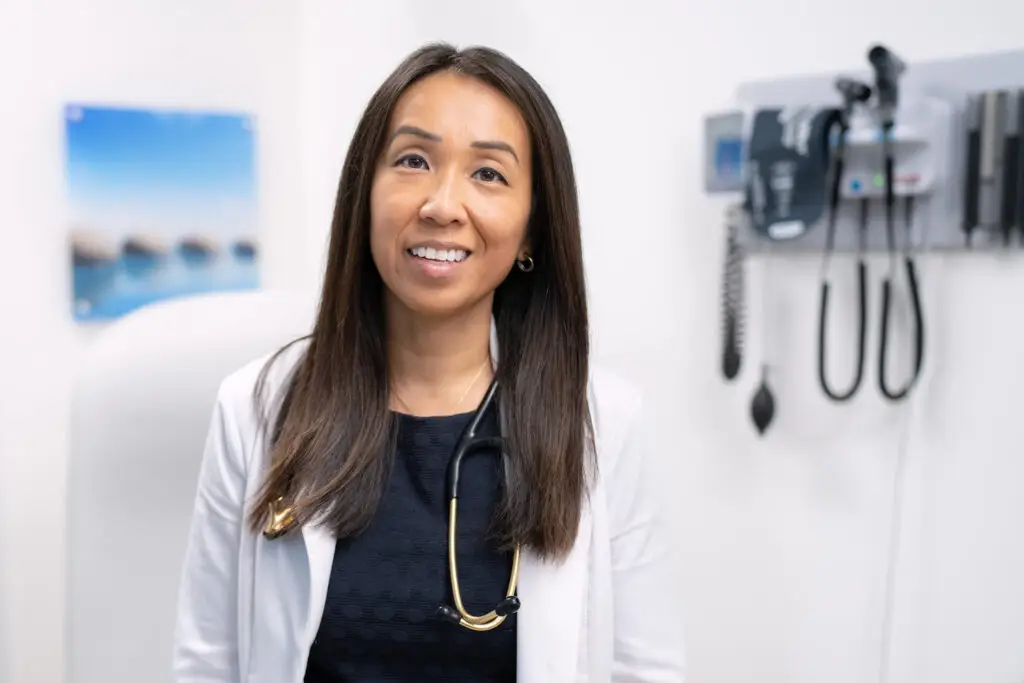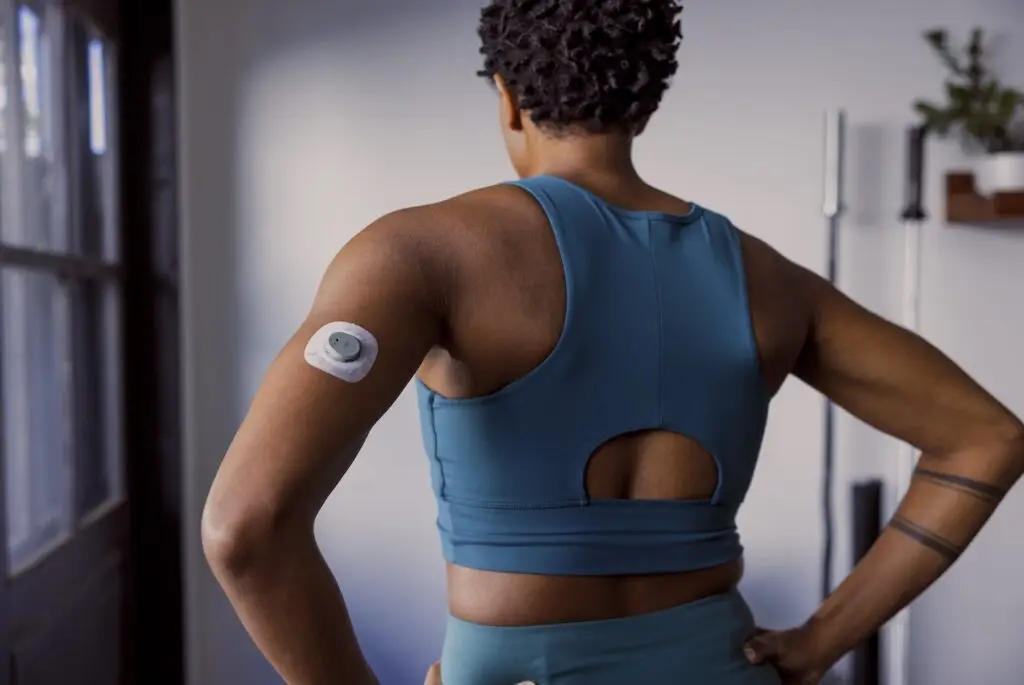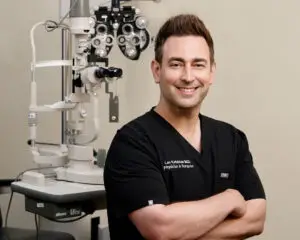Everybody’s talking about hormones. Celebrities like Michelle Obama, Sex and the City’s Kim Cattrall, Oprah Winfrey, and the irrepressible Gwyneth Paltrow are waxing poetic on menopause, and, according to industry publication BeautyMatter, the market for products related to that particular life stage will hit $24.4 billion by 2030. There are more than 225,000 TikTok posts under the hashtag #hormonehealth, many of them focusing on “balancing” out-of-whack levels of estrogen, progesterone, testosterone, and more. Those often-mysterious little chemical messengers are having a moment.
According to Dr. Ashlee Schelsier, a Sharp Community Medical Group board-certified OB-GYN, “hormonal imbalance” isn’t a clinical diagnosis in and of itself, since “our hormones as women vary hour to hour, day to day, and by what part of the cycle we’re in, so it is normal to have big fluctuations.”
However, she adds, “we do have clinical diagnoses that result in changes in our hormones that are a symptom of a disease.” And with age comes the palpable shifts of menopause.

Courtesy of West Coast OBGYN
The associated symptoms—annoying at best and debilitating at worst—frequently leave ovary-havers scrambling for solutions, from medications and supplements to foods said to help our hormones achieve equilibrium. “It’s really important to partner with a medical team and a physician that is willing to sit and listen and understand your experience,” says Dr. Meredith McMullen, a San Diego OB-GYN with Kaiser Permanente. “In the past, there has been a tendency to underplay or dismiss these symptoms, both on the patient and provider side. But you don’t have to suffer in silence.”
The first step is working to understand exactly what’s going on. Per the World Health Organization, polycystic ovary syndrome, or PCOS, affects approximately six to 13 percent of reproductive-aged women globally. Doctors typically diagnose PCOS if you have some combination of irregular or absent periods; the titular cysts on your ovaries; and signs of elevated androgenic hormones like testosterone, including acne and excessive hair growth. People with the condition might also experience insulin resistance, chronic inflammation, issues regulating cholesterol, and even depression and anxiety.
“The syndrome itself actually runs with things like Type 2 diabetes … and obesity,” McMullen explains. “That’s why we call it a syndrome, because we see the effects across multiple body systems. This disorder is really specific to women who are still menstruating.”

Others experience the lesser-known premenstrual dysphoric disorder (PMDD), “defined as recurrent, severe, and distressing symptoms that occur during the luteal phase, which is the week or two before menstruation, and significantly improve within a few days after the onset of menstruation,” McMullen says. Symptoms include anxiety, depression, headaches, and severe fatigue, all more extreme than your garden-variety PMS.
Perimenopause (the period of transition just before your cycle stops permanently) and menopause (which you’ll have officially reached once you’ve gone 12 months without a period) are different—they’re normal, age-related stages, but they can come with uncomfortable symptoms and side effects. “What menopause really signifies is the end of the ovaries producing consistent levels of estrogen and progesterone,” McMullen adds. “But instead of the ovaries stopping like a light switch, what we see is that the light switch ‘flickers.’ It’s that flickering time frame that corresponds to the perimenopausal phase where you’re getting irregular secretion of estrogen from the ovaries. That’s why you see these perimenopausal symptoms”— things like night sweats, hot flashes, fatigue, weight gain, even joint pain—“start to become more prevalent.”
But because the symptoms people experience can be so diverse and far-reaching, it can be difficult to tell whether what you’re dealing with is truly a hormone issue. For example, “there are a lot of things that mimic PCOS, like androgen disorders [or] thyroid disease,” Schlesier explains. Clinicians use tools like physical exams, patient history, blood tests, and ultrasounds to diagnose conditions such as PCOS and PMDD.
While many hormonal diseases are not curable, there are plenty of routes to treat them. “There’s a supplement that is helpful with PCOS called inositol,” Schlesier says. “The main treatment for PCOS is going to be an oral contraceptive pill. It increases something called your sex hormone–binding globulin, which binds up those excess androgens. It also regulates your cycle. It is important to have four cycles a year … to protect your uterus against potential pre-cancer and cancer.”
For PMDD, SSRI antidepressants can help, as can hormonal contraception. “The way [birth control medications] work is they give a steady level of estrogen and progestin, which slows down the body’s normal production of endogenous hormones,” Schlesier explains. “We are not adding hormones to what the body already produces, but replacing the hormones with a more steady level, preventing these larger swings that the patient is sensitive to.”
For managing unpleasant perimenopause and menopause symptoms, “the main state of treatment is classically estrogen and progesterone,” McMullen says. “Those are the two hormones that are FDA-approved for hormone therapy.” That can come in the form of patches, creams, and other delivery methods, or, for some, a birth control pill.
This form of therapy can have benefits beyond easing hot flashes, too. “Treating you hormonally will also reduce the risks of osteoporosis, dementia, and cardiovascular disease,” Schlesier adds.
And though social media has been flooded with chatter questioning contraceptive pills’ safety, “they’ve been around for over 40 years, and they’re very well-studied,” McMullen points out. While some people have contraindications that can make them poor candidates for certain types of pills—including vascular or heart issues or a family history of breast cancer— “the overwhelming evidence shows that they are safe and effective forms of reversible contraception for the vast majority of women.”
Concerns about these medications often center around the fact that the hormones they deliver are “unnatural,” but Schlesier takes a different tack: “As mammals, our bodies are meant to have, like, 15 children and breastfeed them until they are 7,” she says. “We’re not meant to ovulate this much. Being on a birth control pill is probably a more natural state than the socially conditioned state we’re in right now.”
Nevertheless, regardless of whether you’re utilizing hormonal contraception, your daily habits play a part in controlling hormone-related conditions and symptoms, too. “With any kind of disease, we’re looking at diet and exercise,” Schlesier says. “The PCOS diet is going to be very similar to a Mediterranean diet,” which prioritizes plant-based foods and healthy fats.
Ultimately, it’s rarely one individual approach that will make the difference. “A lot of my clients have been dealing with [their symptoms] for years,” says Bridget Walton, a San Diego–based certified functional hormone specialist and women’s hormone coach. “When you’re focusing on [something like] phytoestrogens or getting endocrine disruptors out of your system, it can feel like, ‘Oh, well, I’ve already checked these things off the list so it must be this really small, nuanced thing that I just haven’t found yet.’ It’s harder to look at the big picture, which is why working with a coach or reflecting with a friend can be very helpful.”
Walton’s own health concerns inspired her to transition from a military career to coaching. She doesn’t diagnose or treat in any clinical sense—instead, her work is about helping clients shift their lifestyle to support their overall well-being and, in turn, their hormone health. Working with her starts at $300 for an introductory call designed for taking stock of your cycle, sleep, gut health, nutrition, and more and creating an initial plan. “When you look at different parts of health in silos, you’re just not getting the full picture,” she says.
Walton encourages clients to track their cycle and symptoms, as well as their digestion. Because insulin resistance is associated with PCOS, she recommends that those experiencing it be mindful of their blood sugar by starting each meal with vegetables and moving after eating. And, perhaps the toughest tip of all: “Let’s all do a little audit on our stress,” Walton says. “Let’s figure out what we can cut from our schedule, and remember that processed foods or sugars are also a form of stress.”
PARTNER CONTENT
Her suggestions might differ depending on the stage of life you’re in—for example, “somebody going through perimenopause or menopause might find it beneficial to incorporate foods that have more phytoestrogens, like flax seeds or soy,” she adds.
These plant compounds “help regulate hormone levels and reduce hot flashes, so they’re part of a bigger picture of a balanced diet.” McMullen confirms. “Hormones absolutely impact every system, and looking at your body in its entirety and thinking about your wellness from a global perspective is going to lead to much improved longevity in the longterm.”






















